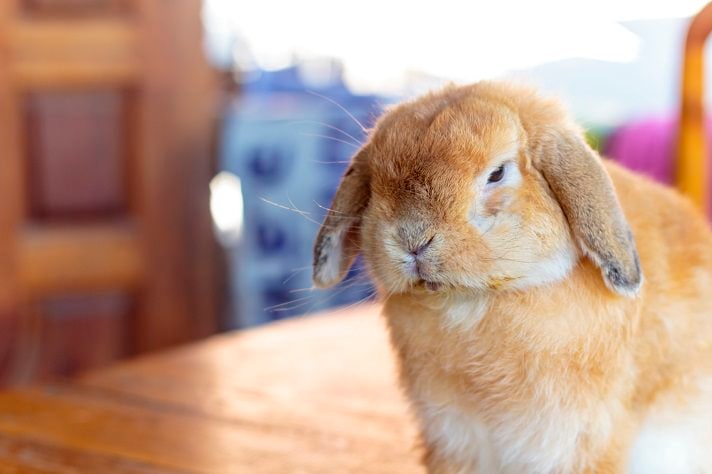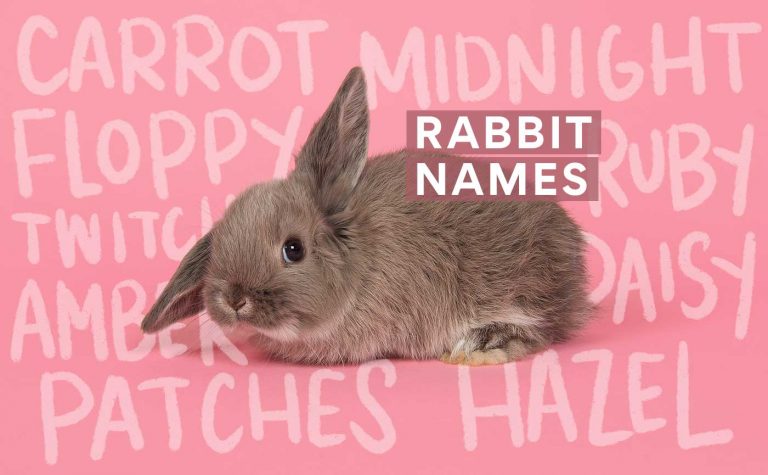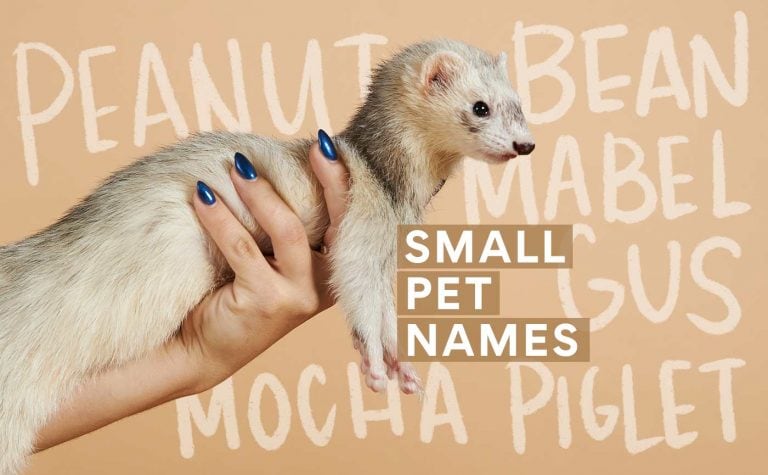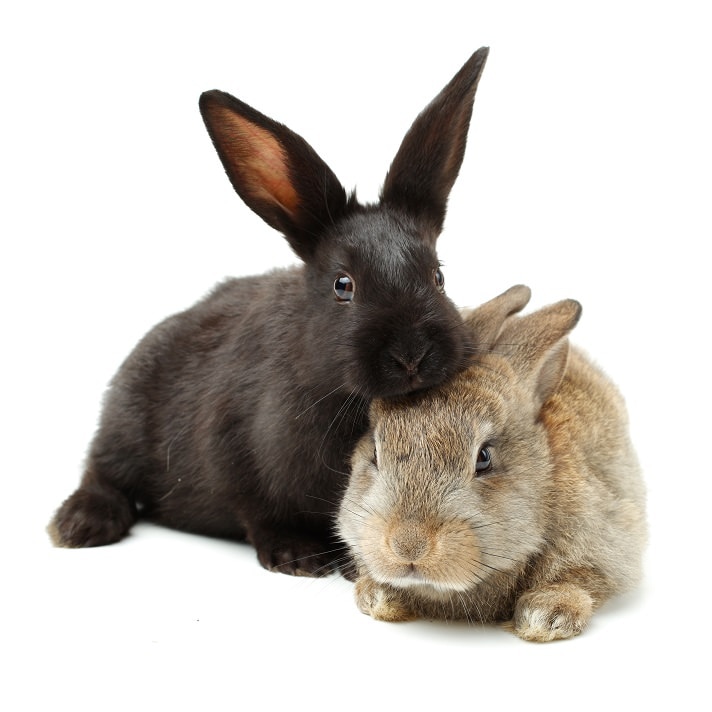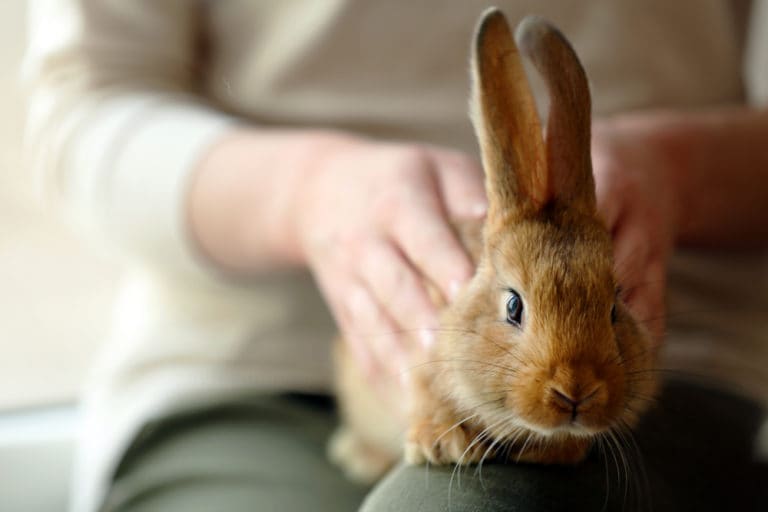A purebred rabbit with a pedigree leaves no mystery as to its ancestry, and certain breeds exhibit distinctive characteristics that are easy to spot anywhere — Dutch rabbits, for instance, or Dwarf Hotots. But how about when you aren’t sure of your rabbit’s background? Perhaps you have a rabbit with an unknown background and you wish to learn more about his genetic makeup. Or perhaps you’re looking at an adoption center for a rabbit that needs a good home, and you are mystified by all of the shapes, sizes and colors. What if your rabbit doesn’t exhibit the obvious characteristics of any particular breed?
Mixed-breed dog owners have an easier time establishing the makeup of their dog’s background. DNA testing can determine the backgrounds of mixed-breed dogs and reveal the breeds that contributed to their genetic makeup. But what of rabbit owners who are pondering the same questions?
“As far as I know, DNA testing for rabbits does not exist yet,” said Meagan Thompson of Dog-DNA.com.
Until such testing becomes available, rabbit owners must rely on other methods in order to determine the breeds that make up their bunny’s heritage.
Check Those Ears
Ears are the first rabbit characteristic to consider. You can quickly evaluate the possibility of several breeds simply based on the ear type of your rabbit.
A) Are the ears lopped, as in falling down, framing the rabbit’s face?
B) Are they partially lopped, possibly due to heavy fur inside the ears?
C) Do the ears stand up straight in the traditional “rabbit ear” fashion?
If your answer is A, you are looking at a rabbit that is related to one of the lop breeds; such as the Holland Lop, the Mini Lop, the English Lop, the French Lop or the American Fuzzy Lop. These are the only lop breeds recognized by the American Rabbit Breeders Association (ARBA). These five breeds range in size from the petite Holland and American Fuzzy Lops (weighing up to 4 pounds) to the massive French Lop (weighing more than 10 pounds). Additionally, the ears of the Mini Lop and the Holland Lop are distinctly different; with the Holland exhibiting a shorter ear and the Mini Lop exhibiting a longer ear. Familiarize yourself with photographs of both breeds so that you can spot the differences.
If your answer is B, it’s possible that your rabbit is related to one of the Angora breeds, such as the Satin Angora, the French Angora, the English Angora, the Giant Angora or the Jersey Wooly. However, the long woolen coats of the Angora breeds are easily identifiable as well, so if your partially lopped rabbit is short-coated, he or she is definitely not an Angora, and you are probably looking at a crossbred lop rabbit instead. Rabbits with partially lopped ears often occur in crossbred lops and also can be found in purebred Holland Lop rabbits with poorly set crowns.
If your answer was C, then you still have a lot of detective work to do, as there are 37 rabbit breeds that do not exhibit Angora wool or lopped ears!
Big Rabbit Or Small Rabbit?
Your next step is to weigh your bunny. You don’t need to worry about getting an ultra-accurate-down-to-the-ounce weight; you just want to get a basic idea of your rabbit’s size.
Is your rabbit:
A) 2 to 4 pounds?
B) 4 to 6 pounds?
C) More than 6 pounds?
If your answer was A, then your bunny is dwarf-sized, and you may be looking at a Dwarf Hotot, a Netherland Dwarf, a Polish or a Britannia Petite. (Holland Lops and American Fuzzy Lops are also in this size range, but they would exhibit lopped ears as previously explained). Dwarf Hotots have extremely distinctive markings — a band of dark fur (usually black, but occasionally blue or chocolate brown) around their eyes and a white coat. If your rabbit doesn’t display those characteristics, move on down the list. Netherland Dwarf and Polish rabbits are noted for their small ears — and the Britannia Petite has the distinction of a semi-arch shape (see “Rabbit Shapes”).
If your answer was B, then your rabbit is in the “small-but-not-dwarf-sized” range, and there are several breed possibilities to consider.
Dutch rabbits are well-known for their unique markings, which includes a white blaze, a wide band of white around their shoulders (known as a “saddle”) and white feet. Their markings are easy to identify and can’t be mistaken for anything else. Florida Whites are completely white with pink eyes. Himalayans have a cylindrical shape that is entirely their own (see “Rabbit Shapes”), and they are only found in one color, which is white with dark points. To further confuse would-be rabbit identifiers, several breeds also exhibit Himalayan coloring (the color is sometimes called “Californian” in other breeds), but the actual Himalayan breed is easy to spot with its unique body shape.
Mini Rex rabbits have a velvet-like rex coat (see “Coat Types”), and Mini Satins have lustrous satin coats (also see “Coat Types”). Havanas have traditionally been a dark solid color: black, blue (dark slate blue-gray) or chocolate brown, although the new “broken” variety (black, blue or chocolate with white) is now ARBA recognized. Tans feature a full-arch shape (see “Rabbit Shapes”) and exhibit tan coloring, and Thriantas are always a deep, rich shade of orange.
If your answer was C, and your rabbit is larger than 6 pounds, then you have a lot of possibilities to consider. Is your rabbit white with a pattern of markings? English Spots feature an elaborate pattern of dark spots and marks but are otherwise entirely white. Checkered Giants are similarly marked, but are considerably larger than the English Spot (hence the name, Checkered Giant). If your rabbit is white with black points (ears, nose, feet and tail) and in the 8- to 10-pound range, then you may be looking at a Californian. However, remember that two similarly sized breeds — the Rex and the Satin — can also exhibit the Californian color pattern, so be sure to closely examine the rabbit’s coat type to further determine the specific breed.
How about if your rabbit is entirely white with red eyes? You could be looking at a New Zealand White (but remember, New Zealands can also be found in black and red, and the new broken variety). You could also be looking at a white Flemish Giant, but this would entirely depend upon the rabbit’s size; New Zealands are approximately 9 to 12 pounds, while Flemish Giants are more than 13 pounds. Flemish Giants are also found in several additional colors, including varieties of gray, so bear this in mind if you’re looking at a solid-colored rabbit of “giant” size.
If you have a rabbit with an unusual color pattern, don’t overlook the Harlequin, the Silver Marten or the Standard Chinchilla. Each one exhibits a different color, so do a bit of homework on these “tricky” breeds.
Evaluate The Coat
Now that you’ve looked at ear types and sizes, closely examine your rabbit’s coat.
Is the fur:
A) soft and short, average rabbit fur?
B) long, fluffy and wool-like?
C) short, thick, dense and super soft?
D) shiny and lustrous with a transparent hair shell?
Now, it’s quite likely that you answered A to this question. That’s because the majority of rabbit breeds, 37 of the 47 breeds recognized by ARBA, display “normal” fur, aptly named because it’s just that: normal. If you picture a traditional rabbit, you’re picturing normal fur. [Since this article was written, the Lionhead breed has been recognized. This breed blends both short fur and woolly fur, with a distinct “mane” encircling the head. – Editors.]
If you answered B, then your rabbit may be an Angora or may have Angora heritage; its long woolen coat is impossible to miss. If your rabbit is woolly, then you might want to more closely examine the differences between English Angoras, French Angoras, Satin Angoras, Giant Angoras, American Fuzzy Lops and Jersey Woolies in order to better evaluate your rabbit’s probable breed.
Now let’s say that you answered C. Chances are that your rabbit is a Rex, Mini Rex or Rex-cross. Rex rabbits are immensely popular and are notable for their velvet-like coats. Once you’ve touched a Rex rabbit’s coat, you’ll never mistake it for anything else.
The final fur type is satin fur, which is the type of fur your rabbit possesses if you answered D. The lustrous sheen of satin fur is caused by the transparent and reflective qualities of the satin’s hair shaft. Satin coats are seen in the Satin breed as well as in Mini Satins, and also in Satin Angoras, a unique breed that features both fur types in one animal.
Rabbit Shapes
What shape is your rabbit? No, we aren’t asking if your rabbit is ready to run a marathon! ARBA classifies the 47 rabbit breeds into five shapes: compact, commercial, full-arch, semi-arch and cylindrical.
Is your rabbit’s shape:
A) short, compact, wide, deep and full?
B) arched along its back and underbelly, with long limbs?
C) long and slender; cylindrical shaped?
Again, you probably answered A. The majority of rabbit breeds are classified as either compact or commercial shaped, both of which are characterized by short, deep, round bodies. If your rabbit is compact or commercial shaped, then this characteristic won’t give you much help in terms of narrowing down your breed possibilities.
If you answered B, and your rabbit is long-limbed and taller than it is wide, with a distinct arch to its back and underbelly, then you may be looking at one of the full or semi-arched breeds. The semi-arches are also known as “mandolin” types, due to the fact that the arch begins farther down the back than it does on a full-arched breed. Full and semi-arched breeds include the Belgian Hare, the Britannia Petite, the Checkered Giant, the English Spot, the Rhinelander, the Tan, the American, the Beveren, the English Lop, the Flemish Giant and the Giant Chinchilla. However, many of these semi- and full-arch breeds are rare and not easily located.
Finally, if you answered C, and your rabbit is long and narrow, it is quite possibly a Himalayan, the only breed that displays the cylindrical shape.
The Mixed Question
While you might not be able to tell with certainty whether or not your rabbit is purebred, you can usually establish the probable breed or breeds that exist in your rabbit’s background.
In rabbits of unknown ancestry, it is sometimes difficult to determine whether a rabbit is a mixed breed or a purebred of poor type. Many rabbit breeders sell their “off-type” or “mismarked” purebred rabbits as pets, and these individuals could easily be mistaken for a mixed breed even though they are not. A good example of this is a rabbit that has Dutch markings but lacks the distinctive blaze. There isn’t a way to determine whether the rabbit is a Dutch mix, or a mismarked purebred Dutch, unless it also exhibited an obvious characteristic of another breed.
One of the best steps you can take in learning to identify rabbits is to educate yourself as much as possible. Read books, attend rabbit shows, visit websites, and familiarize yourself with the shapes, sizes, colors and breeds. While this is undoubtedly an investment of time, it is a very rewarding pursuit and a lot of fun.
By: Samantha Johnson
Feature image: Via piyaphat50/iStock/Thinkstock
Share:
